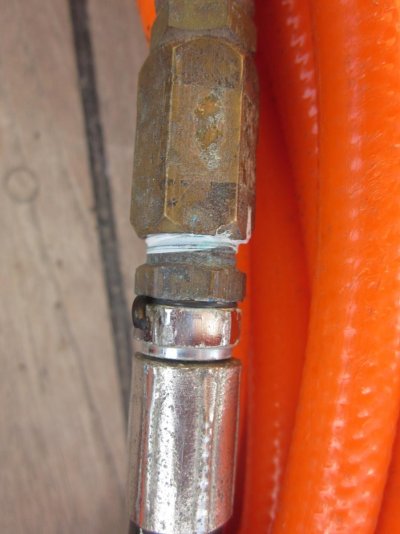dwhatty
Moderator Emeritus
- Joined
- Sep 25, 2008
- Messages
- 2,846
- Location
- USA
- Vessel Name
- "Emily Anne"
- Vessel Make
- 2001 Island Gypsy 32 Europa (Hull #146)
Every couple of years or so we wrap a pot warp in the wheel. When we had a twin engine boat, it was no big thing. We'd proceed on the remaining engine and deal with the wrap later when we were on our mooring, at anchor or on a float where the water might be warmer for me or my wife going under or where a diver might be readily available.
Now we have a single engine boat and we wrapped our first pot the other day out in the middle of a bay where the wind was blowing and the water was cold. It wasn't a bad wrap so we were able to limp a mile or so to a mooring we knew of.
However, two unsuccessful dives later I realized that I must be getting older as I no longer could deal with the cold water long enough to clear the wheel. (We lucked out when a lobsterman wrapped a warp right in front of us, donned a wet suit, freed his wheel and then came over and did ours as well).
So my question to those of you who are diver savvy: What sort of wet suit might be suitable for short dives in 60 degree water? I see a lot of different types of suits available online but the mind boggles at the choices of types, thicknesses etc. Would a hood also be advisable?
Then there is the problem that my lung capacity is a bit less than it used to be. It would be nice to be able to take a few breaths while under the boat so one could get the job done in one foul swoop rather than having to come up for air a couple of times.
I don't want to go to the time and expense of buying full scuba gear and going through the certification training. Also, I'd have to travel quite a distance to get any training.
There are some "mini" scuba tanks such as THIS but they are still pretty expensive and you still need to go through certification training in order, as I understand, to be able to buy the gear and to refill it.
I know, I know! I really should bite the bullet and get the training but is there something simpler, less expensive, available that would allow one to get a few breaths 4' underwater?
http://www.browniedive.com/mini-scuba
Now we have a single engine boat and we wrapped our first pot the other day out in the middle of a bay where the wind was blowing and the water was cold. It wasn't a bad wrap so we were able to limp a mile or so to a mooring we knew of.
However, two unsuccessful dives later I realized that I must be getting older as I no longer could deal with the cold water long enough to clear the wheel. (We lucked out when a lobsterman wrapped a warp right in front of us, donned a wet suit, freed his wheel and then came over and did ours as well).
So my question to those of you who are diver savvy: What sort of wet suit might be suitable for short dives in 60 degree water? I see a lot of different types of suits available online but the mind boggles at the choices of types, thicknesses etc. Would a hood also be advisable?
Then there is the problem that my lung capacity is a bit less than it used to be. It would be nice to be able to take a few breaths while under the boat so one could get the job done in one foul swoop rather than having to come up for air a couple of times.
I don't want to go to the time and expense of buying full scuba gear and going through the certification training. Also, I'd have to travel quite a distance to get any training.
There are some "mini" scuba tanks such as THIS but they are still pretty expensive and you still need to go through certification training in order, as I understand, to be able to buy the gear and to refill it.
I know, I know! I really should bite the bullet and get the training but is there something simpler, less expensive, available that would allow one to get a few breaths 4' underwater?
http://www.browniedive.com/mini-scuba






